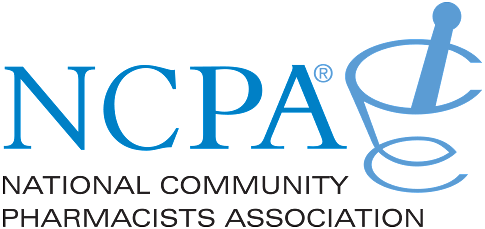
Pharmacy Deserts: Mapping America's Growing Access Crisis
A new interactive map reveals the alarming rise of 'pharmacy deserts' across the U.S., disproportionately impacting rural and low-income communities. What’s driving this trend and what can be done?
Pharmacy Deserts: Mapping America's Growing Access Crisis
NEW YORK, NY – November 04, 2025 – A newly launched interactive map is shedding light on a growing healthcare crisis: the proliferation of “pharmacy deserts” across the United States. Developed jointly by the National Community Pharmacists Association (NCPA) and researchers at the University of Southern California (USC), the tool reveals the alarming extent to which millions of Americans lack convenient access to essential medications and pharmaceutical care.
The Geography of Disadvantage
The map defines pharmacy deserts based on proximity to a pharmacy, with varying thresholds for rural, suburban, and urban areas. Rural communities are considered deserts if they are more than 10 miles from a pharmacy, while the threshold drops to 2 miles in suburban areas and 1 mile in urban settings. Even more stringent criteria apply to low-income areas with limited vehicle ownership – just 0.5 miles defines a desert. The resulting picture is stark. Approximately one in eight neighborhoods across the U.S. persistently lacks convenient pharmacy access, with rates soaring as high as 50% in certain rural and underserved areas.
“What this map clearly demonstrates is that access to pharmacies is not uniform across the country,” explains a healthcare policy analyst involved in the project. “There are significant disparities, particularly for those living in rural communities, low-income neighborhoods, and communities of color. These are the populations already facing the greatest health challenges.” The map’s interactive features allow users to explore pharmacy access at the state, county, and congressional district levels, offering a granular view of the problem. It also identifies ‘critical access’ pharmacies – those whose closure would severely worsen access for surrounding communities – providing valuable data for policymakers and advocates.
The Forces Driving Pharmacy Closures
While a complex issue, the rise of pharmacy deserts is largely driven by economic pressures facing independent pharmacies. “For years, independent pharmacies have been squeezed by a number of factors,” says a pharmacist in rural Ohio who recently closed his practice. “Rising drug costs, declining reimbursement rates, and the growing power of Pharmacy Benefit Managers (PBMs) have made it increasingly difficult to stay afloat.” PBMs act as intermediaries between insurers, pharmacies, and drug manufacturers, and they have been criticized for practices that prioritize profits over patient access.
These practices include low and unpredictable reimbursement rates, retroactive fees known as DIR (Direct and Indirect Remuneration), and the creation of preferred pharmacy networks that favor large chain pharmacies and their own mail-order services. “The PBMs have a tremendous amount of power, and they use it to drive down prices, often at the expense of independent pharmacies,” explains a healthcare economist. “They are essentially dictating the terms of the relationship, and independent pharmacies have little bargaining power.” The closures are not limited to small-town pharmacies, either. Major chains like CVS and Walgreens are also shuttering locations, particularly in urban areas, contributing to the growing number of pharmacy deserts. Recent bankruptcies and closures of Rite Aid, impacting many communities, have further exacerbated the issue.
Disparities in Access and Impact on Communities
The consequences of pharmacy deserts are far-reaching. Limited access to medications can lead to non-adherence, worsening chronic conditions, and increased hospitalizations. “When people can’t easily get their medications, they’re more likely to skip doses or not fill their prescriptions at all,” says a community health worker in a low-income neighborhood. “This can have serious consequences, especially for those with chronic conditions like diabetes or heart disease.”
The impact is disproportionately felt by vulnerable populations. Rural residents, who often have limited transportation options, are particularly affected. Similarly, low-income communities and communities of color, which are already facing systemic health disparities, are more likely to be located in pharmacy deserts. “This is not just a healthcare issue; it’s a social justice issue,” explains a public health advocate. “Access to healthcare is a fundamental right, and everyone deserves to have convenient access to the medications they need.” Recent research has demonstrated that pharmacy deserts are overwhelmingly located in minority neighborhoods, highlighting the persistent inequities in healthcare access across the nation.
Innovative Solutions and the Path Forward
Despite the challenges, there are signs of hope. A number of innovative solutions are being explored to improve pharmacy access in underserved areas. These include telepharmacy, which allows pharmacists to provide care remotely, and mobile pharmacies, which bring pharmacy services directly to communities in need. Digital-first pharmacies, offering convenient medication delivery and online consultations, are also gaining traction.
However, these solutions alone are not enough. Addressing the root causes of the problem requires systemic changes, including PBM reform and increased investment in rural healthcare infrastructure. “We need to level the playing field for independent pharmacies and ensure that they can compete fairly,” says a representative from the NCPA. “We also need to address the underlying socioeconomic factors that contribute to health disparities.” The new interactive map is a crucial first step, providing policymakers and advocates with the data they need to make informed decisions and prioritize resources effectively. It remains to be seen whether these efforts will be enough to reverse the trend and ensure that everyone has convenient access to the medications they need.
